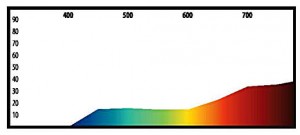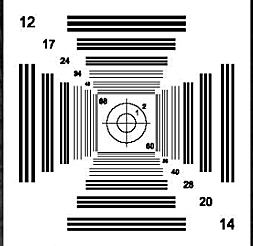 Loading... Please wait...
Loading... Please wait...(800) 346-8274
Free Ground Shipping on Orders over $150!
Over 23,000 Items Discounts up to 40% off Retail
Edge Eyewear Safety Information
Our Newsletter
- Home
- Edge Eyewear Safety Information
Edge Eyewear Safety Information
Edge Eyewear Safety Tests from Carbide Processors
All Edge Eyewear glasses are tested by independent laboratories that are accredited to test for ANSI Z87.1+2010.
1. Impact TestsAll Edge Eyewear glasses are tested by independent laboratories that are accredited to test for ANSI Z87.1+2010. |
|
|
A. High Mass Impact Section 6.2.2 Spectacle frames and lenses shall be capable of resisting a 500 gm (17.6 oz.) spike that is dropped from a height of 127 cm (50 inches). |
|
|
B. High Velocity Impact Section 6.2.3 Spectacle frames and lenses shall be capable of resisting impact from a 6.35 mm (.25 inch) diameter steel ball traveling at a velocity of 45.72 m/s (150 ft/s). |
|
|
C. Penetration Test Section 6.2.4 Lenses shall be capable of resisting penetration by a weighted needle with a total weight of 44.2 gm (1.56 oz.) dropped from a height of 127 cm (50 inches). |
|
|
D. Ballistic Tests Edge eyewear ballistics test MCEPS GL-PD 10-12 Formerly: MIL-PRF31013 3.5.1.1 Simulates a shotgun blast from 33 feet 150 ft/s (102 MPH): AN51 Z87.1+ 2010 660 ft/s (450 MPH): Ballistic MIL-PRF31013 3.5.1.1 |
|
What Constitutes a Failure in impact Tests?Section 6.2.1 – When each type of test is conducted as indicated in Sections 6.2.2, 6.2.3 and 6.2.4 a complete device shall fail if any of the following occurs: • Piece fully detached from the inner surface
• Fracture
• Penetration of the rear surface
• Lens not retained
• For the high-velocity test, the unaided eye observes any piece adhering to the contact paste, or observes contact paste on the projectile or complete device. |
|
|
2. Optical Tests |
|
|
A. Luminous Transmission — Section 5.1.2
Luminous Transmission A test that measures the fraction (percentage) of light passing through a medium (polycarbonate lens). Requirements: Clear: Must have a minimum of 85% VLT (Section 5.1.2) Tinted: Must have a minimum of 8% and a maximum of 85% VLT (Section 7.1.2 – Table 10) |
|
|
B. Refractive Power Section 5.1.4 – Figure ES All Edge Eyewear Glasses Are Compliant With Ansi Z8711+ 2010 A test that measures the ability of a lens to focus light rays. (Measured in diopters) What constitutes failure? Refraction of light ± .06 Diopters |
|
|
C. Resolving Power Section 5.1.4 – Table 1 A test that measures the ability of a lens to form separate distinct images of two objects close together when visually inspected. (Focus) What constitutes Failure? Distinguishing less than 20 Lines |
|
|
D. Prismatic Power Section 5.1.4 – Table 2 A test that measures the angular deviation of a ray of light after passing through a lens. (Measured in diopters) What constitutes Failure? 0.5 Diopters or more deviation |
|
|
E. Astigmatism – Section 5.1.4 Table 1 This test looks for a condition of the lens in which there is a difference in refractive power due to curvature. (Flat spots) What constitutes Failure? 0.06 Diopters or more difference |
|
|
Additional Tests Required Markings – Section 5.4 Table A Coverage – Section 5.2.5 Annex D – Rule of 10′s |
|













